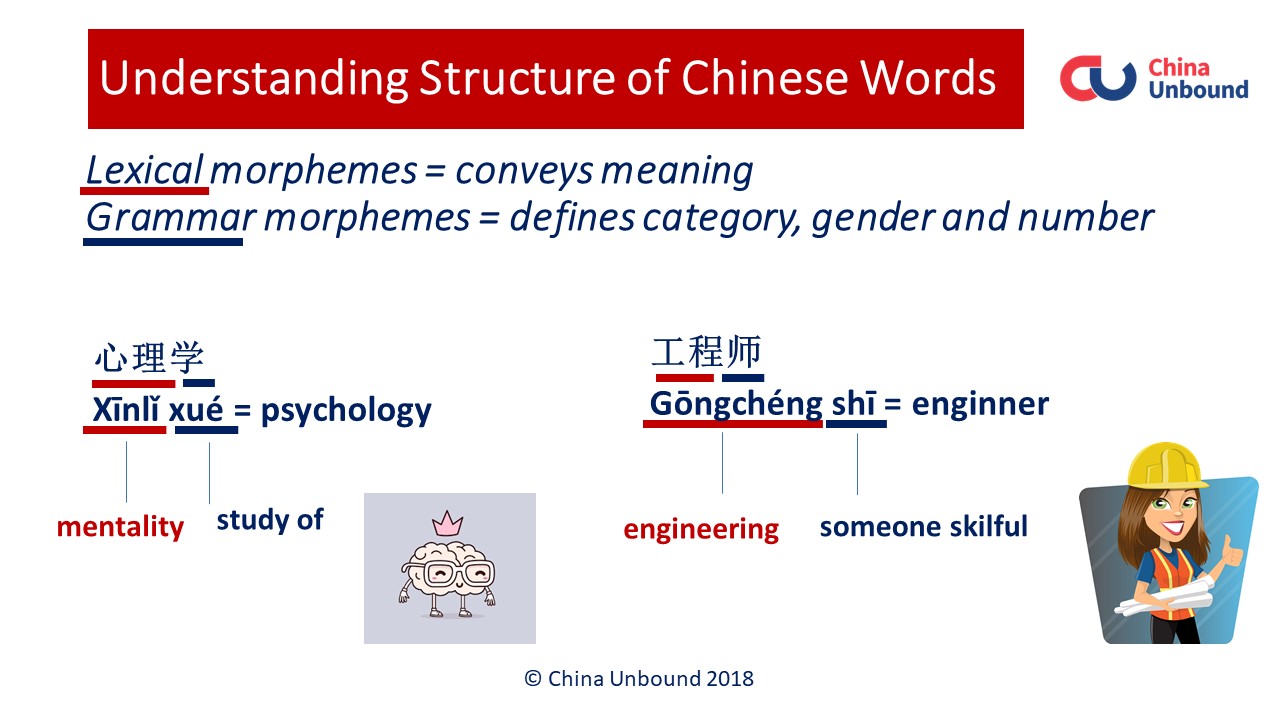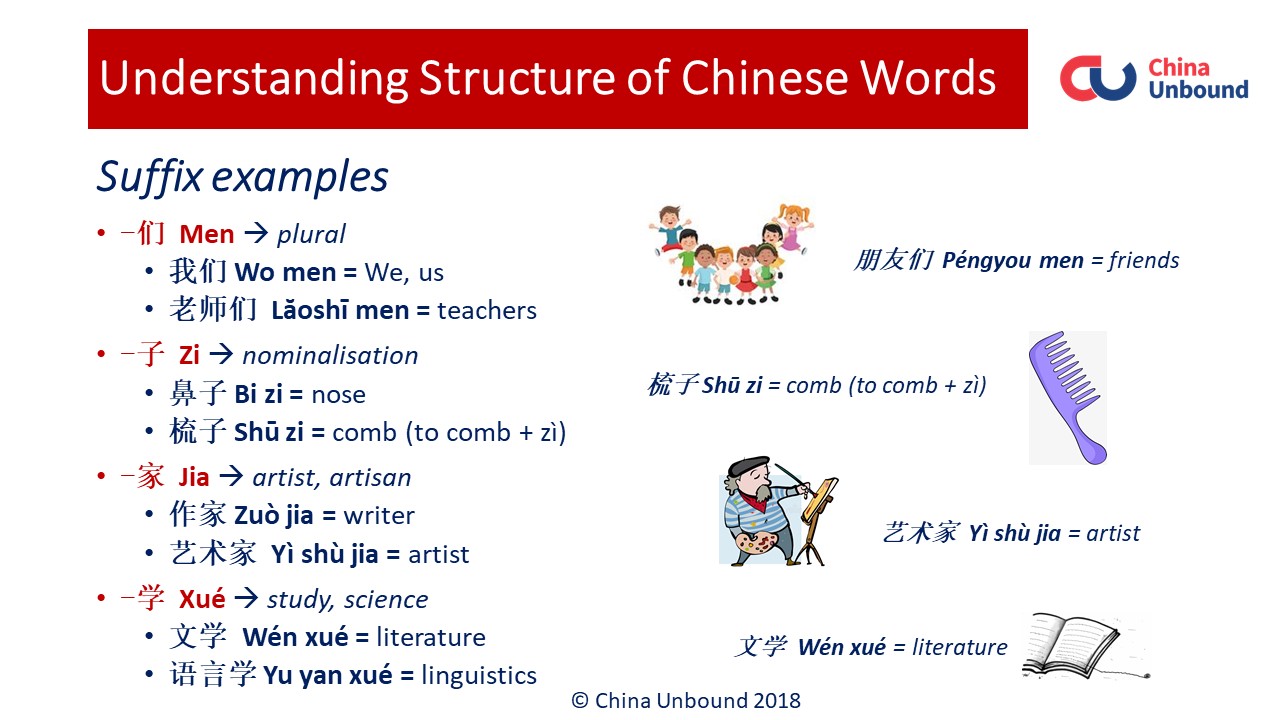Are you learning or planning to learn Chinese? Did you know that by understanding how a Chinese word is constructed and what parts (called ‘Morphemes‘ in linguistics) it is made up of, you’ll find it much easier to memorise new characters and to remember the meaning of the ones that you’ve seen before?
The most basic part from which we can start analysing the structure of Chinese words is the Morpheme. A morpheme is the smallest significant unit in a language and the science that studies the functioning of morphemes is called morphology.
In Classic Chinese, most morphemes were found on their own, isolated from each other, called ‘Monosyllabic Words‘ in linguistics – that is short words that cannot be broken down into smaller parts. On the contrary, in Modern Chinese different parts of words combine with one another to create longer words, which linguists call ‘Bi-‘ or ‘Polysyllabic‘ words.
Let’s look at the comparison below:

In Chinese, small parts of words combine together to form longer words. Like logo blocks, each word has a ‘root’ meaning, and when words are put together, they form new words! Take the example of the word ‘Apple Pie’ in English, Apple is a word, Pie is a word, and when you put them together, they form a new word. This is how most words are structured in Chinese: they are logical, meaningful, and descriptive.
To illustrate this, let’s see how the word classmate (tongxue) is formed:
Part #1 Tong, means the same, together. Part #2 Xue, means to study. Therefore a classmate is someone who studies with you. What this means is that learning new Chinese words will become easier as you progress, as you learn more and more of the basic ‘lego blocks’.

These small units can be classified into two types. Lexical units are the nucleus of the word, they’re the lexical basis and they convey the meaning of the word. Grammar units define the grammar category that a word belongs to (for example, whether it is a noun, an adjective, an adverb, or a verb), the gender (masculine or feminine), and the number (singular or plural).

Chinese words are created through a linguistic process that is called derivation, meaning the addition of a unit (called “affix” in linguistics) to a root (the main part of a word, its core), which triggers a change in the grammar category and/or in the meaning of the derived word. Derivation can happen either by adding a unit before the root, at the beginning of the root (prefix) or by adding a unit after the root, at the end of the root (suffix). To understand the concept of derivation at work, let’s check out the examples below. Note that some of these additional units have fixed meanings so by learning them you’ll find it easier to guess the meaning of a word, even though you have never seen it before!


A word that is made up of two or more units is called a compound word. The criteria according to which two units can be combined together to create a compound word are plenty.




